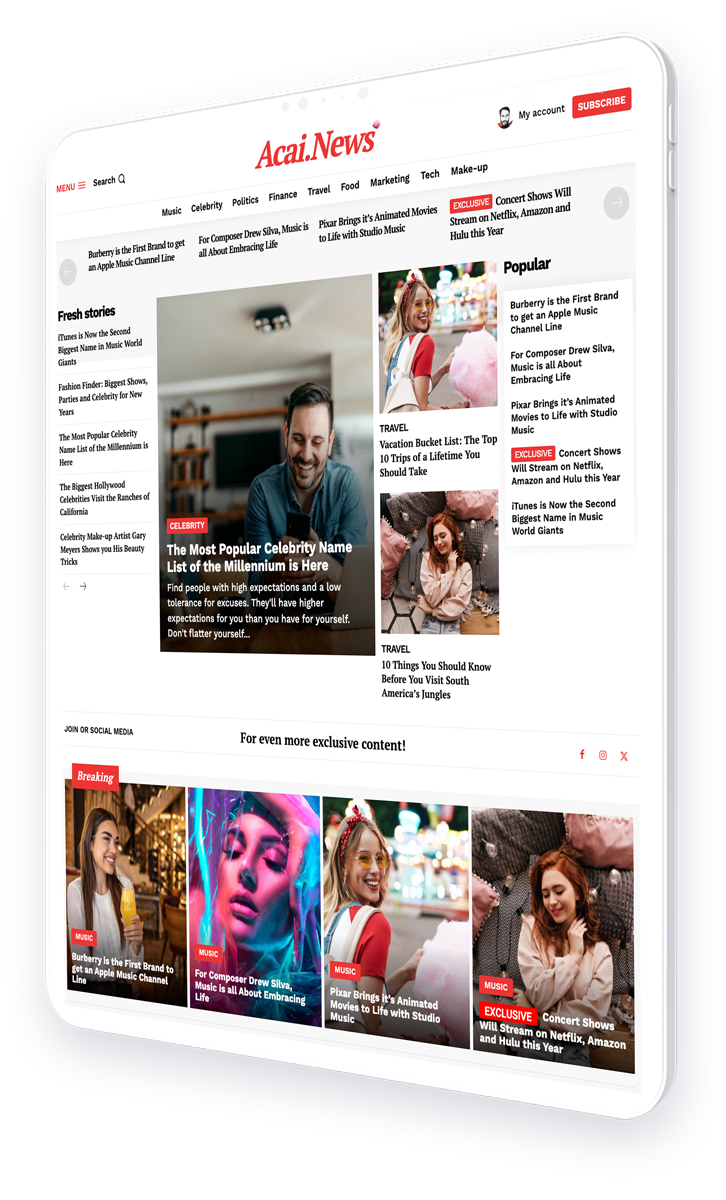How AI-driven testing can optimize magazine content for maximum reader retention
In the digital age, where content is king, the ability to capture and retain reader attention is more crucial than ever.
With the vast amount of information available online, readers have become more selective, making it imperative for content creators to optimize their material for maximum engagement.
Artificial Intelligence (AI) has emerged as a powerful tool in this endeavor, particularly through its application in A/B testing.
This article explores how AI-driven A/B testing can revolutionize magazine content, enhancing reader retention and engagement rates.
Understanding A/B Testing: A Brief Overview
A/B testing, also known as split testing, is a method of comparing two versions of a webpage or content to determine which one performs better.
Traditionally, this involves creating two variants (A and B) and measuring their performance based on specific metrics such as click-through rates, time spent on page, or conversion rates.
The goal is to identify which version resonates more with the audience, leading to higher engagement.
The Role of AI in A/B Testing
AI enhances traditional A/B testing by introducing automation, precision, and scalability.
AI algorithms can analyze vast amounts of data quickly, identifying patterns and insights that would be impossible for humans to discern manually.
This allows for more nuanced testing and optimization, ensuring that content is tailored to the preferences and behaviors of the target audience.
Automation and Efficiency
One of the primary advantages of AI in A/B testing is automation.
AI can automatically generate and test multiple content variations simultaneously, significantly reducing the time and effort required for manual testing.
This efficiency allows content creators to focus on strategy and creativity rather than the mechanics of testing.
Precision and Personalization
AI-driven A/B testing offers a level of precision that traditional methods cannot match.
By analyzing user data, AI can segment audiences based on demographics, behavior, and preferences, allowing for highly personalized content delivery.
This personalization leads to more relevant and engaging content, increasing the likelihood of reader retention.
Scalability and Adaptability
AI’s scalability is another significant benefit.
As the volume of content and audience size grows, AI can handle the increased complexity without compromising accuracy.
Additionally, AI systems can adapt to changing trends and user behaviors, ensuring that content remains relevant and effective over time.
Case Studies: AI-Driven A/B Testing in Action
Several organizations have successfully implemented AI-driven A/B testing to optimize their content and improve engagement rates.
Here are a few notable examples:
- Netflix: Netflix uses AI to personalize content recommendations for its users.
By analyzing viewing habits and preferences, Netflix’s AI algorithms can suggest shows and movies that are more likely to engage individual users, leading to higher retention rates. - The New York Times: The New York Times employs AI to optimize headlines and article placements on its website.
By testing different variations, the publication can determine which headlines attract more clicks and engagement, ensuring that their content reaches a broader audience. - BuzzFeed: BuzzFeed utilizes AI to test different content formats and styles.
By analyzing user interactions, BuzzFeed can identify which types of content resonate most with their audience, allowing them to tailor their offerings accordingly.
Statistics: The Impact of AI on Engagement Rates
The impact of AI-driven A/B testing on engagement rates is supported by compelling statistics.
According to a study by McKinsey & Company, companies that leverage AI for content optimization see an average increase in engagement rates of 20-30%.
Furthermore, a report by Gartner predicts that by 2025, 80% of digital marketers will rely on AI-driven testing to enhance their content strategies.
Challenges and Considerations
While AI-driven A/B testing offers numerous benefits, it is not without challenges.
Data privacy concerns are a significant consideration, as AI systems require access to user data to function effectively.
Organizations must ensure that they comply with data protection regulations and maintain transparency with their users.
Additionally, the complexity of AI systems can be a barrier for some organizations.
Implementing AI-driven testing requires technical expertise and resources, which may not be readily available to all content creators.
However, as AI technology continues to evolve, it is becoming more accessible and user-friendly, reducing these barriers over time.
Conclusion: Embracing the Future of Content Optimization
In conclusion, AI-driven A/B testing represents a powerful tool for optimizing magazine content and enhancing reader engagement.
By leveraging AI’s capabilities in automation, precision, and scalability, content creators can deliver more personalized and relevant material to their audiences.
As the digital landscape continues to evolve, embracing AI-driven testing will be essential for staying competitive and meeting the ever-changing demands of readers.
The future of content optimization lies in harnessing the power of AI to create more engaging and impactful experiences for readers.
By doing so, organizations can not only increase their engagement rates but also build stronger connections with their audiences, ensuring long-term success in the digital age.




